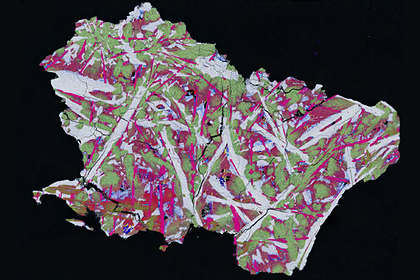Researchers from Australia, the UK, China and the USA have determined that the age of the lunar soil delivered to Earth by the Chang'e 5 mission is 1.96 billion years old - which indicates relatively recent volcanic activity. The scientists' article was published in the journal Science.
The Chang'e 5 spacecraft's return capsule delivered 1.73 kilograms of lunar regolith to Earth on December 16, 2020. The place of its fence - the Ocean of Storms — was not chosen by chance: it is known that this is one of the most geologically young areas of the Moon's surface.
To measure the age of the soil, researchers from the Institute of Geology of the Chinese Academy of Sciences, together with foreign colleagues, selected two samples about three to four millimeters in size. Analysis of the ratio of lead isotopes showed that their age is 1963 plus or minus 57 million years. "This is a phenomenal result. From the point of view of planetary time, this is a very accurate definition," notes one of the researchers, professor at Washington University in St. Louis Brad Joliffe.
According to him, the discovery will help fill a "gap" in the geological history of the Moon between three billion years — the age of samples delivered by the Apollo missions - and a billion years when some externally datable impact craters formed. Rock dating will help improve the so-called crater counting method. The moon is used as a "clock" for the entire Solar System — only on it it is possible to correlate the number of craters in a certain area with the age of its rocks. Extrapolation of these data allowed us to determine the age of many areas of Mars, as well as the moons of Jupiter and Saturn.
The samples are lunar basalts - rocks formed during volcanic eruptions. This fact indicates relatively late volcanic activity on the moon - contrary to the prevailing beliefs that it ended relatively early. "We also showed that the type of basalts is not similar to those previously found in lunar rocks. This suggests that they originate from another part of the Moon's mantle," notes another author of the study, Catherine Joy, a lecturer at the University of Manchester.
Earlier, researchers from China, Germany and the USA analyzed the chemical composition of the lunar soil delivered by Chang'e 5 - and found "exotic" fragments there.
Dmitry Yuryev

